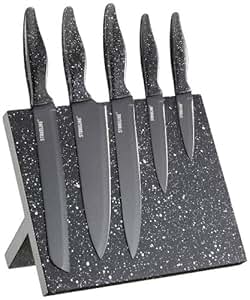Keeping your hunting knife razor-sharp isn’t just about aesthetics; it’s about safety and effectiveness. A dull knife is more dangerous than a sharp one because it’s more likely to slip, causing injury. Plus, a sharp blade makes for cleaner, more humane harvests. But achieving that perfect edge requires more than just a random sharpening stone. You need the right accessories, and understanding how to use them is key. This guide will walk you through the essential tools that will transform your knife sharpening routine from a frustrating chore into a precise and rewarding process.
Choosing the Right Sharpening Stone: Grit Matters
The foundation of any good sharpening system is a quality sharpening stone. These aren’t your grandpappy’s whetstones; modern stones offer a wide range of grits, each designed for a specific stage in the sharpening process. Grit refers to the size of the abrasive particles on the stone. Lower grit numbers (e.g., 80, 120) are coarser and remove material quickly, ideal for heavily damaged blades. Higher grit numbers (e.g., 600, 1000, 8000) are finer and create a progressively smoother, sharper edge. A typical sharpening set might include:
- Coarse stone (80-220 grit): For repairing heavily damaged or chipped blades.
- Medium stone (300-600 grit): For removing the majority of imperfections and shaping the bevel.
- Fine stone (800-1200 grit): For honing the edge and achieving a keen sharpness.
- Extra-fine stone (above 4000 grit): For creating a truly polished, mirror-like edge (often optional).
Consider natural stones (like Arkansas or Japanese water stones) for their unique properties and feel, or synthetic stones for their consistency and durability. Whatever you choose, ensure it’s flat and even. A warped stone will create an uneven edge on your knife.
Sharpening Stone Maintenance: Keeping it Flat
A flat sharpening stone is crucial for a consistent edge. Over time, stones can become uneven from use. To maintain their flatness, use a honing guide (discussed below) and occasionally flatten the stone with a flattening stone or lapping plate. These tools gradually remove the high spots, restoring the surface’s evenness.
Honing Guides and Sharpening Systems: Precision and Consistency

Sharpening freehand can be difficult and lead to inconsistent results. A honing guide or sharpening system dramatically increases your accuracy and makes sharpening much easier, particularly for beginners. These guides clamp onto your knife, maintaining a consistent angle throughout the sharpening process. Look for features like adjustable angles and multiple slots to accommodate different blade shapes. Some high-end systems even have integrated angle measurement to ensure perfect precision.
Sharpening Jigs: An Alternative Approach
Sharpening jigs offer another method for maintaining consistent angles. These devices usually have slots or fixtures to hold your knife at a preset angle as you move the knife across the sharpening stone. They can be more affordable than some sharpening systems but offer less adjustability.
Essential Accessories: Beyond the Stones

Beyond stones and guides, several accessories enhance your sharpening experience:
- Sharpening lubricant (water or oil): Most stones require lubrication. Water stones, as their name suggests, use water, while oil stones use oil to reduce friction, preventing clogging and overheating.
- Non-slip mat: Provides a stable and secure base for your sharpening stone. This prevents accidental slips, keeping both the stone and your knife safe.
- Cleaning cloth: For wiping away excess lubricant and sharpening debris. A microfiber cloth works well.
- Knife sharpening gloves: Safety is paramount, so consider gloves to protect your fingers.
Understanding Torque and its Importance in Sharpening (Analogous Explanation)

While a hunting knife sharpening setup doesn’t involve an engine or torque in a literal sense, the concept of controlled pressure and consistent movement is analogous to managing torque in machinery. Applying too much pressure can damage the stone or the knife’s edge, while applying too little results in slow, inefficient sharpening. The ideal approach involves even, consistent pressure throughout the stroke—a controlled application of “torque” in our analogy—to achieve a clean, uniform sharpening across the entire blade.
Conclusion: Invest in Your Sharpening Skills

Investing in the right sharpening accessories is an investment in the longevity and performance of your hunting knives. The initial cost is quickly offset by the savings of avoiding frequent professional sharpening services and the invaluable knowledge of keeping your blades in peak condition. With the right tools and a little practice, you’ll not only maintain sharp, safe knives, but you’ll also develop a rewarding skill that will last a lifetime. So pick up the necessary accessories, explore the different techniques, and experience the pride of maintaining your hunting knives with precision and expertise.


